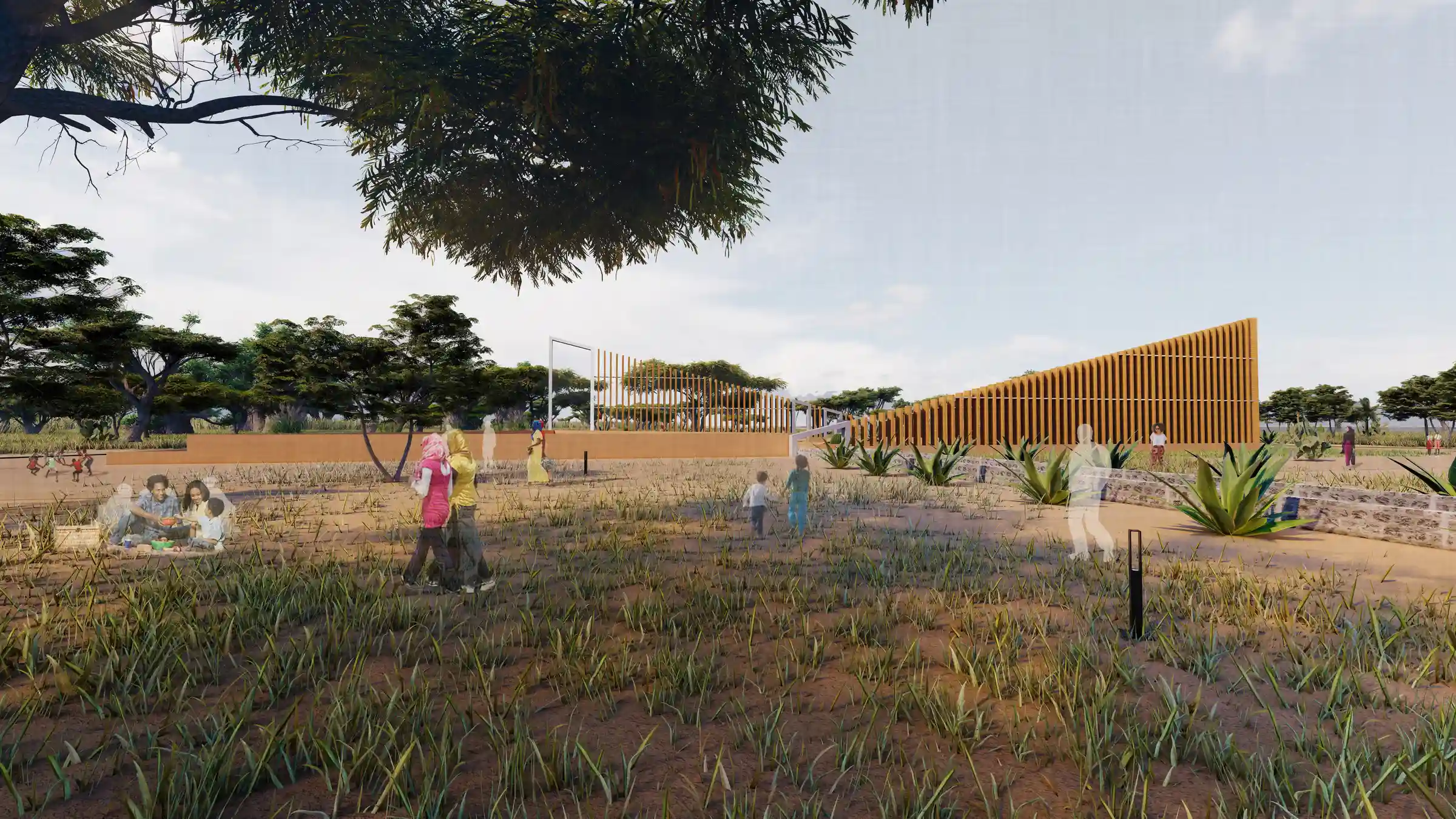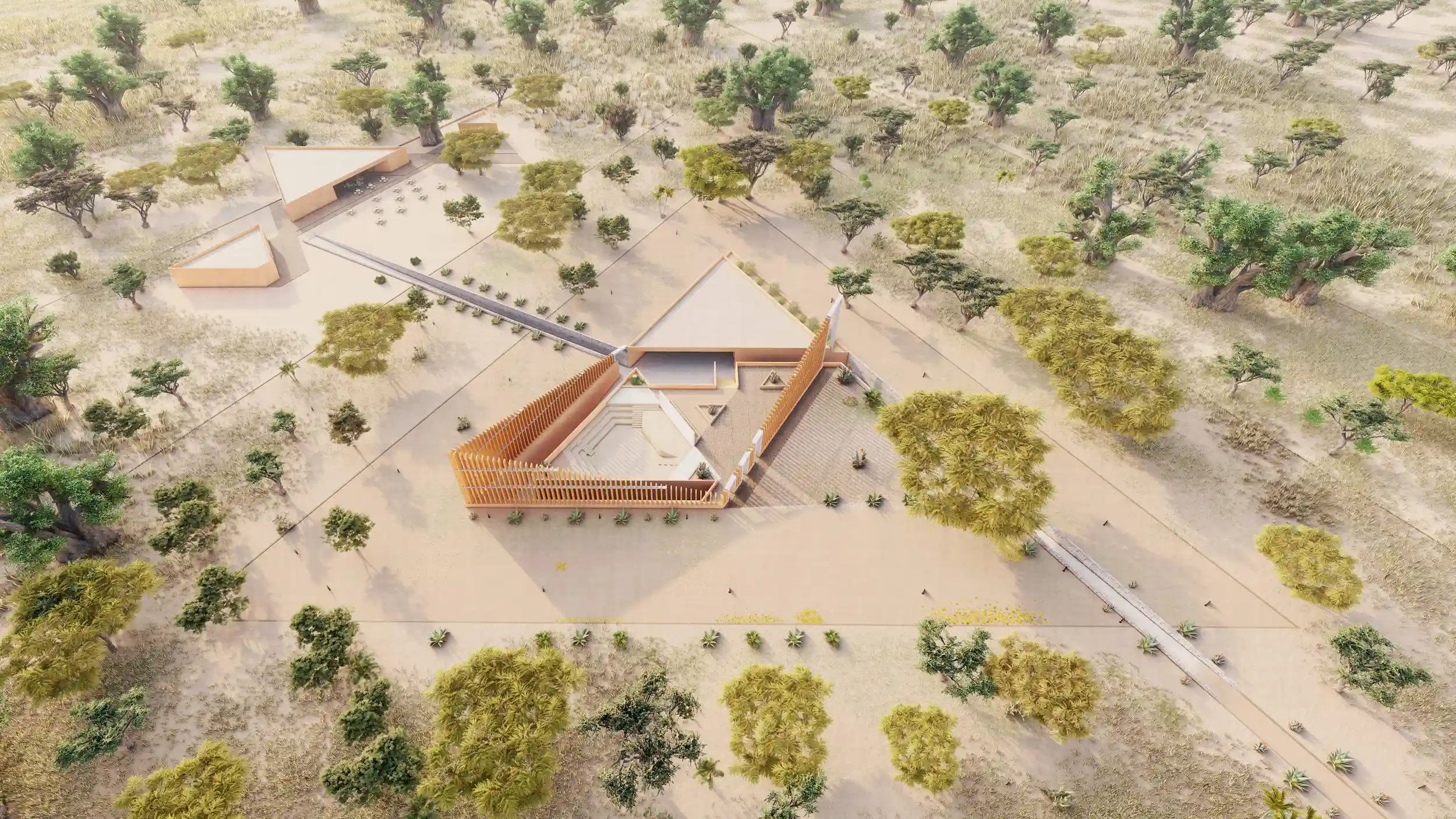The mission of The Josef & Anni Albers Foundation is “the revelation and evocation of vision through art“. Its “sibling organization”, Le Korsa, promotes medical, cultural and educational facilities in rural areas of Senegal, West Africa. The two organisations are collaborating on the development and construction of a new museum, cultural and community centre in the town of Kaolack, in the southwest of the country. For its design, a jury established by The Josef & Anni Albers Foundation and Le Korsa selected the Niger-based architectural firm Atelier Masōmī, owned by African architect Mariam Issoufou Kamara. Their project is the Bët-bi, or ‘the eye’ in the Wolof language, Museum.
The museum, with art as its central theme, will offer the local and national community a specific educational programme, as well as exhibitions, performances, film screenings and other events, all free and open to the public. Or, according to its website, it will bring “the joys of visual art to a population that may not previously have had access to museums, as well as to an international audience“, and also “bringing human beings together through art”. So, the rooms and spaces of the Bët-bi museum will be open to traditional and contemporary African art, art from the diaspora (including works from the Harlem Renaissance) and art from a “a myriad of other cultures that demonstrates the universality and timelessness of various visual motifs”.
According to the architectural firm Atelier Masōmī, the design of the Bët-bi is intended to make the museum part of the landscape. In part, this effect is achieved by the fact that the building penetrates the earth rather than rising above it. In this respect, “by sinking the galleries below the ground”, say those responsible, “we are referencing back to the sacrality of the land, honouring what came before while creating a space for art and creative expression”.
By “what was before”, the architectural studio refers to the peoples who ancestrally inhabited the territory of Senegal where the museum will be located. The Mandingo culture, “a people of empire and monumental architecture“, on the one hand, and, on the other, that of the Serer people, with “a deeply mystical indigenous religion that had an intimate relationship to the natural elements: the sun, the wind, water, ancestral spirits”. This approach led Atelier Masōmī to choose triangles as the determining figures in the design of the Bët-bi Museum, as, in their opinion, “they define the relationship between the elements, the living and the dead – in a self-renewing cycle”.








